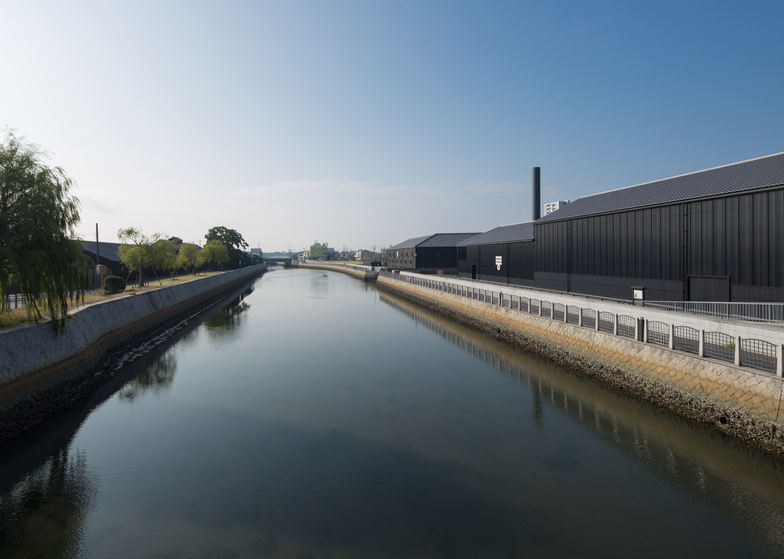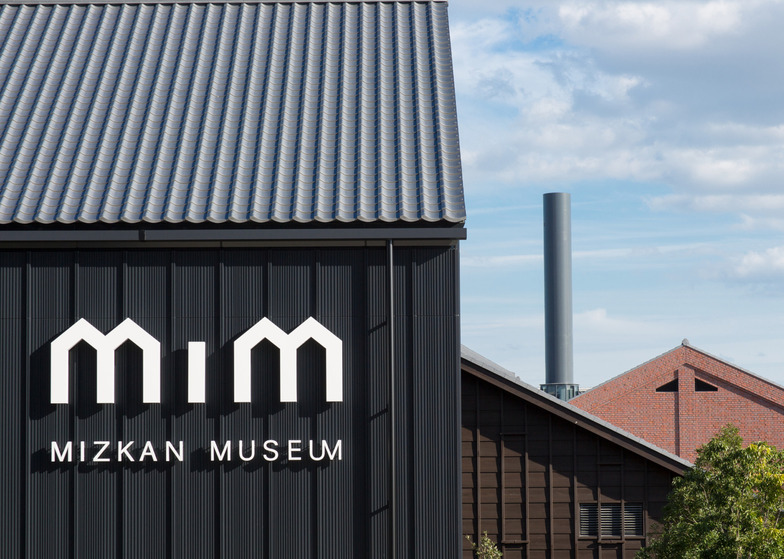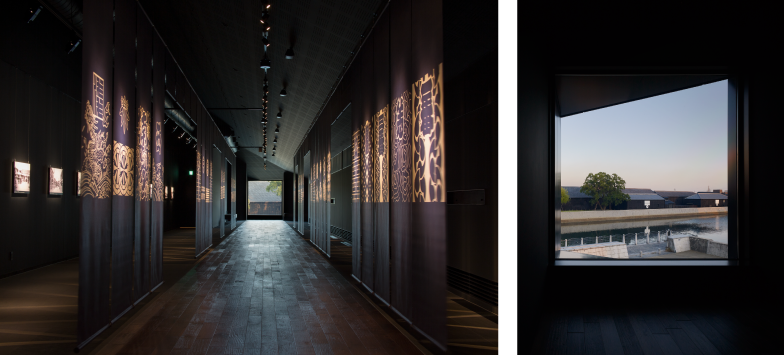On November 8th, the Mizkan Group (based in Handa City, Aichi Prefecture) opened the " Mizkan Museum " (MIM). Mr. Taishi Ogawa of NTT Facilities, who handled the museum's architectural design; Mr. Kenta Shimizu of Robot, who created the exhibition's video works; Mr. Satoshi Endo of Dentsu Tech, who was in charge of planning; and Mr. Jun Naito of Dentsu Inc. Event & Space Design Bureau, the producer, looked back on the five-year production process and shared their insights.
Reporting & Editing: Aki Kanahara, Dentsu Inc. Event & Space Design Bureau

(From left) Mr. Naito, Mr. Ogawa, Mr. Shimizu, Mr. Endo
■How to Create "Connections" from Memory and the Past to the Future
Naito: The Mizkan Museum opened on November 8th, but Dentsu Inc. began this project back in March 2010. Spanning five and a half years, including the Great East Japan Earthquake, this was probably the longest project of my career at Dentsu Inc. When I first visited the town of Handa, the unique streetscape of black-walled buildings lining the canal struck me deeply, and I felt the immense power inherent in the land.
The Mizkan Group has continuously pursued the craft of vinegar-making in Handa since the Edo period. When considering how to express the enduring passion for craftsmanship passed down from predecessors since the Edo era, we arrived at the theme "The Four Seasons of Food and Life." The plan aimed to express the Mizkan Group's food technology and history, alongside the seasons experienced through the land of Handa and the seasonal sensibilities surrounding food.
For the architecture, NTT Facilities handled the overall design and supervision. First, Mr. Ogawa, how did you initially envision the overall architecture?
Ogawa: As Mr. Naito mentioned, when I first visited the site, I sensed an indescribable, uniquely relaxed flow of time. Perhaps it was something cultivated by the 200-year history of vinegar making. The Mitsukan Group decided on this major undertaking of redeveloping its headquarters district. We felt that to achieve our goals, we needed to create a place that truly inherits history, not just recreate the old landscape. Creating a hollow theme park wouldn't result in a "living landscape." It was a difficult challenge: updating the previous facilities with new functions while inheriting the land's memory.
Naito: For the exhibition, we divided the space into five thematic zones—"Earth," "Wind," "Time," "Water," and "Light"—to make the "sensations" inherent to the land and the "memories" of those who worked here for generations visible in a new form.
Ogawa: For the entire district, we applied the concept of "creating something new while preserving the past," assigning themes to each area. Across the canal, the second factory area beyond the museum remains unchanged, embodying the idea of preserving "tradition." Conversely, the headquarters and research buildings, the core of Mitsukan's ongoing development, represent "innovation." The new Mitsukan Museum sits between these, becoming a place where "tradition, innovation, and environment" converge.

■How to Incorporate "Learning from the Past to Understand the Present" into Architectural Design
Ogawa: We needed to introduce something new without compromising the memorable streetscape and canal-side views that linger in people's memories. While the building's exterior uses metal for functional reasons, its roof features a distinctive tile-roofed composition.

Additionally, while the building volume is slightly larger than before to accommodate new functions, we made careful adjustments—such as setting it back and matching the roof pitch to the previous structure—to preserve the proportions of the surrounding open space. A major feature is how the canal-facing side maintains the traditional silhouette, while the courtyard side, with its modern horizontal lines, presents a distinctly different character, almost like a separate building.
Naito: I also had a painterly obsession with the view. When you visit places like Kyoto, looking out from inside a building, you see that Japanese aesthetic where the garden is framed, right? I really wanted to achieve that "framing of the view," so I created a framed window at the end of the "Wind Corridor" where the landscape becomes visible.

Endo: The exhibition content itself begins with "learning from the past to understand the present." The sequence connects the history of the vinegar-making industry that grew in Handa, pioneered by Mizkan, to the future. Since it's a fully guided facility, the flow of the story was crucial.
Naito: We wanted to convey the long history dating back to the Edo period as the overlapping layers of the changing seasons, and we also wanted to emphasize the Mitsukan Group's vision and slogan, "What eventually transforms into life." That's why we asked the robot to handle the "Water Theater."
Shimizu: About four years ago, Mr. Naito gave us the theme "The Four Seasons of Food and Life." In the Water Theater, we expressed how Japanese cuisine is deeply connected to the seasonal memories of "spring, summer, autumn, and winter." This was the first time we had the opportunity to spend such an extended period filming. It was a valuable experience to actually follow and film all four seasons over a full year. While there were challenges in shooting over such a long period, it also offered its own unique rewards.

Naito: While CG is common these days, seeing this footage again made me realize how truly beautiful location-shot footage capturing the changing seasons really is. Having locals from the shooting locations appear was also great.
Shimizu: It's real, isn't it? For example, everyone knows that feeling of eating a delicious rice ball under a blue sky! I think things like "it was delicious" or "I was happy" are shared human experiences and memories. So, in the film, I really wanted to reliably evoke that "memory everyone has."


We repeatedly sought out the image of grandpas and grandmas that exists in everyone's memory, approaching actual grandpas and grandmas on location to film them. I think the value and authenticity gained from that steady accumulation really paid off in the end.
Naito: When you asked people to appear, did they agree right away?
Shimizu: At first, they definitely felt shy and embarrassed. But as we talked and they relaxed, their faces gradually lit up. Those smiles weren't acting—they were genuine smiles from the moment they opened up to us. That's really powerful. I'm incredibly grateful to everyone who participated.
Naito: That incredibly delicate expression is what made people cry at the preview event, right?















